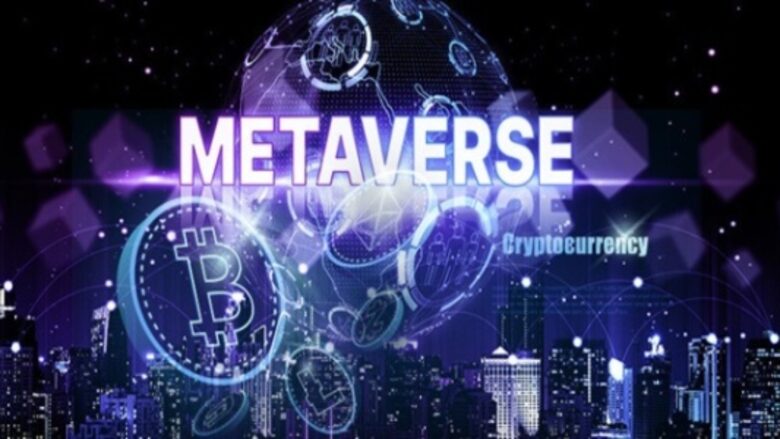The convergence of virtual worlds and cryptocurrencies has created a new metaverse economy and marks the beginning of the digital revolution. It is now the case that cryptocurrencies function as the mainstay of transactions in these digitized realms. The use of blockchain technology guarantees transparency in the buying of virtual real estate and the trading of various digital assets; subsequently, crypto becomes the currency of choice in the metaverse.
With more and more individuals and businesses venturing into the new world, there is an increase in the demand for non-fungible tokens (NFTs) and decentralized finance (DeFi). This article analyzes the adoption of metaverse economy cryptocurrency, the leaders of its adoption, and the prospect of this monumental combination of the virtual world and finance.
Exploring The Metaverse and Their Economic Value:
The metaverse serves as a space where users can conduct business activities through avatars while interacting with one another. Unlike the online world, the metaverse runs on blockchain technology, which provides true ownership over virtual assets such as real estate, in-game assets, and digital fashion. Major companies Meta, Decentraland, and Microsoft have invested billions in the metaverse system infrastructure. It is estimated that the crypto metaverse economy will reach trillions in the next decade and is projected to grow significantly.
Reasons for Choosing Cryptocurrency as The Main Medium of Trade:
In comparison to other currencies, the metaverse offers considerable advantages through cryptocurrencies. The use of blockchain technology ensures a seamless, secure, and faster payment regardless of location. Smart contracts do not require intermediaries, helping to further reduce costs. Along with these payments, cryptocurrencies allow for microtransactions, enabling users to pay for less valuable goods or services. Within these cryptocurrency ecosystems, tokens such as Mana and Sand are adopted as standard currencies within their metaverse, propelling a self-fueling economy. The adoption of crypto wallets helps remove barriers associated with user sign-ups, accelerating circulation.
NFTs and Digital Ownership in the Metaverse:
Non-fungible tokens (NFTs) authenticate the ownership of unique digital assets such as virtual real estate, artwork, or in-game items. They have created a market for virtual properties, some valued in the millions. Merchants can sell and buy NFTs in crypto markets like Rarible and OpenSea. Now, artists, gamers, and investors are rushing into the metaverse for the opportunity to monetize their creations, increasing the demand for cryptocurrencies. Besides that, the combination of NFTs and DeFi enables users to stake, lend, or borrow against their digital assets, opening even more possibilities.
Major Cryptocurrencies Powering the Metaverse:
Ethereum is still dominating the NFT and DeFi world despite the high gas fees, which shows that several cryptocurrencies are competing to take over the metaverse economy. Alternatives like Polygon and Solana offer cheaper and quicker services, making them more appealing to developers. Adopted metaverse-native tokens like SAND from The Sandbox and MANA from Decentraland enable staking, purchases, and governance within their ecosystems. For day-to-day transactions, stablecoins like DAI and USDC serve to maintain value. With the improvement of cross-chain interoperability, the metaverse economy will benefit from cross-chain transactions.
Challenges and Risks in the Metaverse Crypto Economy:
Even with a promise to flourish, the metaverse economy still experiences foundational challenges. The ever-evolving and uncertain regulations placed on cryptocurrency within the metaverse could disrupt growth as governments start looking more closely at DeFi and NFT transactions. Other forms of security risk, such as hacking and scamming, still require stronger safeguards. Furthermore, arguments over the sustainable impact of blockchains like Ethereum, which require far more energy to run than others, remain a source of concern. Alongside these other issues, some networks face a lack of persistent scaling due to increased demand. Responding to these challenges will be essential in meeting goals set for the long term.
The Future of Cryptocurrency in the Metaverse:
There’s a lot of work left to be done in the metaverse, but what is for sure is that it brings along with it an undeniable association with cryptocurrency. The advancements made in Augmented Reality (AR) and Virtual Reality (VR) develop engrossing experiences that are bound to lure more people. In addition, Central Bank Digital Currencies (CBDCs) may make their way to these virtual spaces, serving as a link between traditional finance and digital economies. Because of the ongoing innovations by both tech tetechyiants and low-profile start-up companies, the differentiation between physical economies and virtual ones is expected to blur. The contraction of crypto to the metaverse serves as a sign of dire change in the dynamics of the economy, digital assets, and social engagement.
Conclusion:
The world economy is being transformed for the better with the advent of cryptocurrency and the metaverse. Innovations are being unlocked, and investments are already pouring in. As technology improves for security and interconnectivity, blockchain worlds undergo, and the user interface becomes more simplified. There are still challenges like scaling and regulation, but there is limitless potential. Every investor, entrepreneur, and gamer must understand this phenomenon to stay ahead. The crypto-fueled metaverse economy is a persistent phenomenon that is paving the way for a new era in digital commerce.
FAQs:
1. What is the metaverse economy?
The metaverse economy can be defined as the ecosystem that marks the collision of social interaction and economic activities taking place worldwide. This is made possible in the metaverse through enjoying buying, selling, and trading assets, NFTs, and cryptocurrency.
2. Which cryptocurrencies are most used in the metaverse?
The leading currencies fueling the metaverse include Ethereum (ETH), Decentraland’s MANA, The Sandbox’s SAND, and Solana (SOL).
3. How do NFTs work in the metaverse?
NFTs ensure ownership of virtual assets like land, art, or in-game items, enabling buying, selling, and trading them safely.
4. What are the risks of investing in the metaverse economy?
The metaverse does have risks like market volatility, imposing regulations, threats to cybersecurity, and environmental downsides brought by blockchain networks.
5. Will conventional banks join the metaverse economic system?
Some financial institutions are looking into incorporating the metaverse, but the current leaders in the field are DeFi (Decentralized Finance) platforms that provide direct, unmediated financial services between users.




